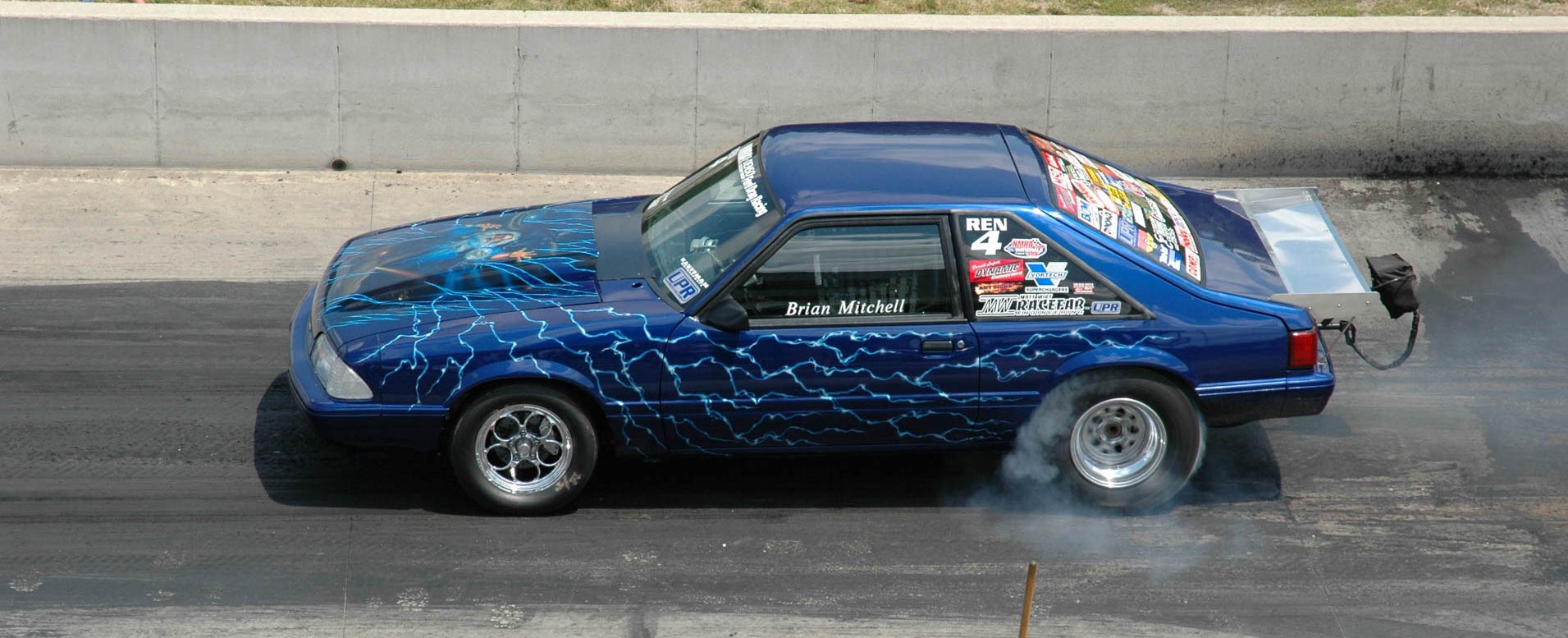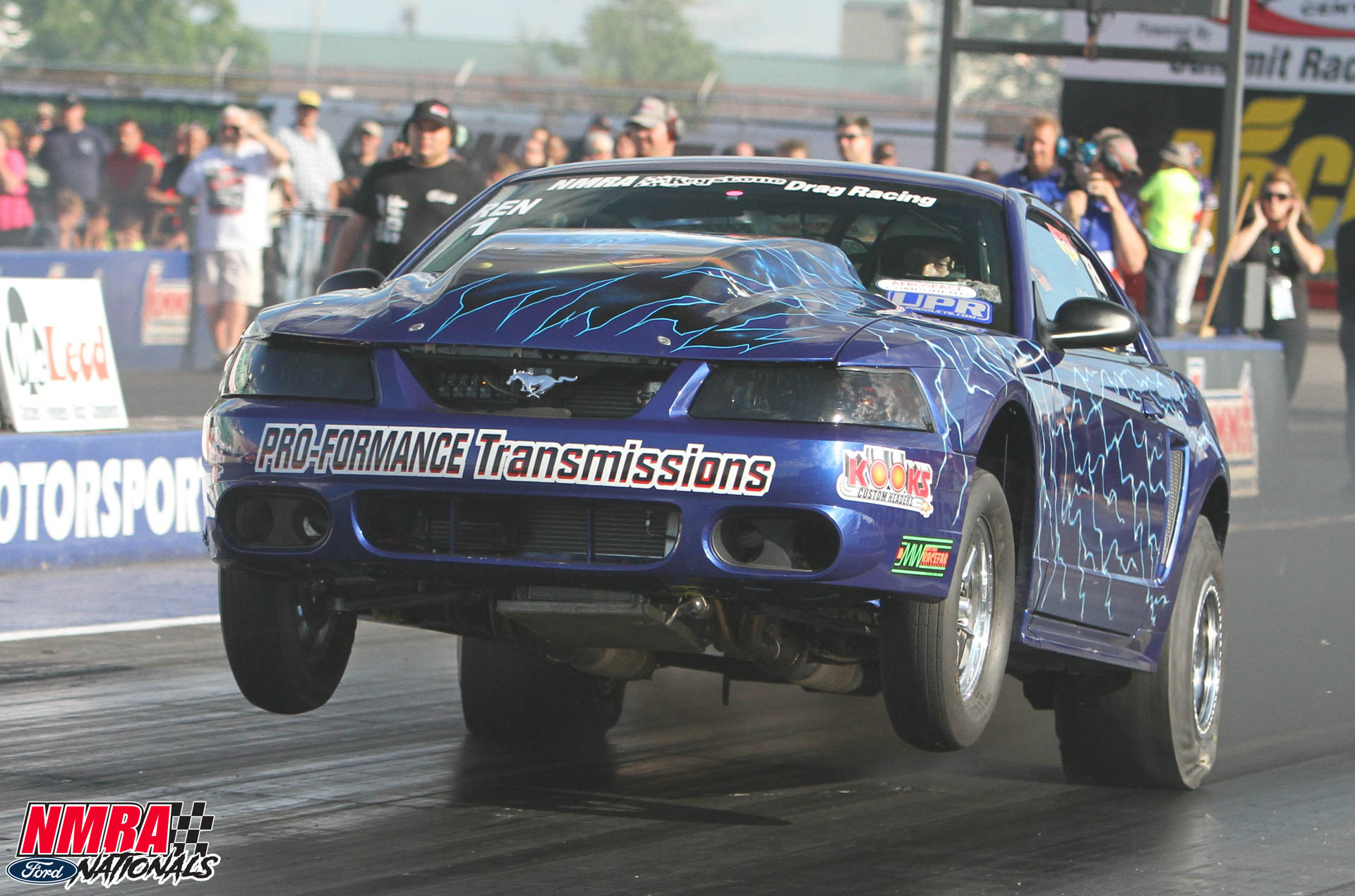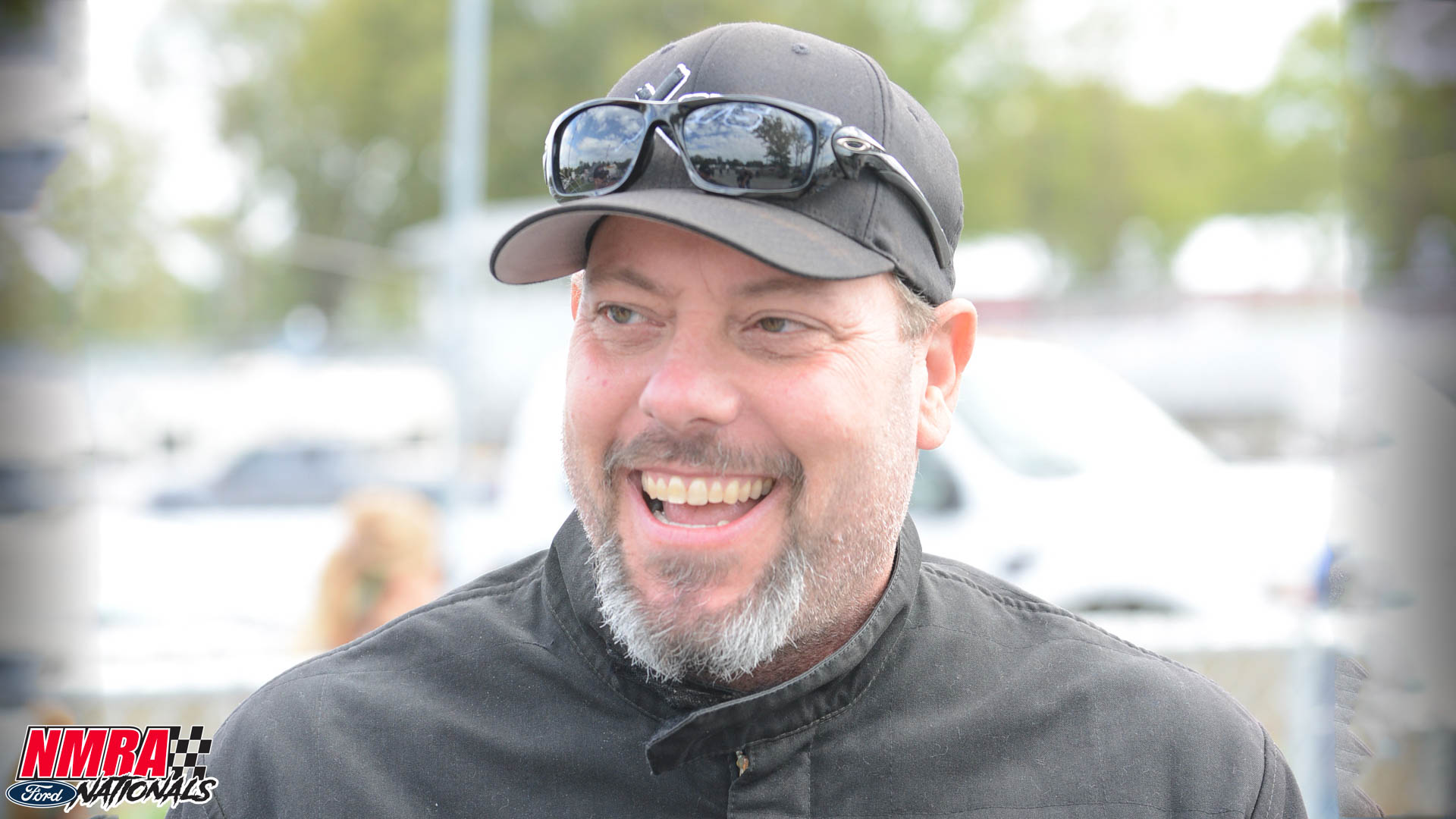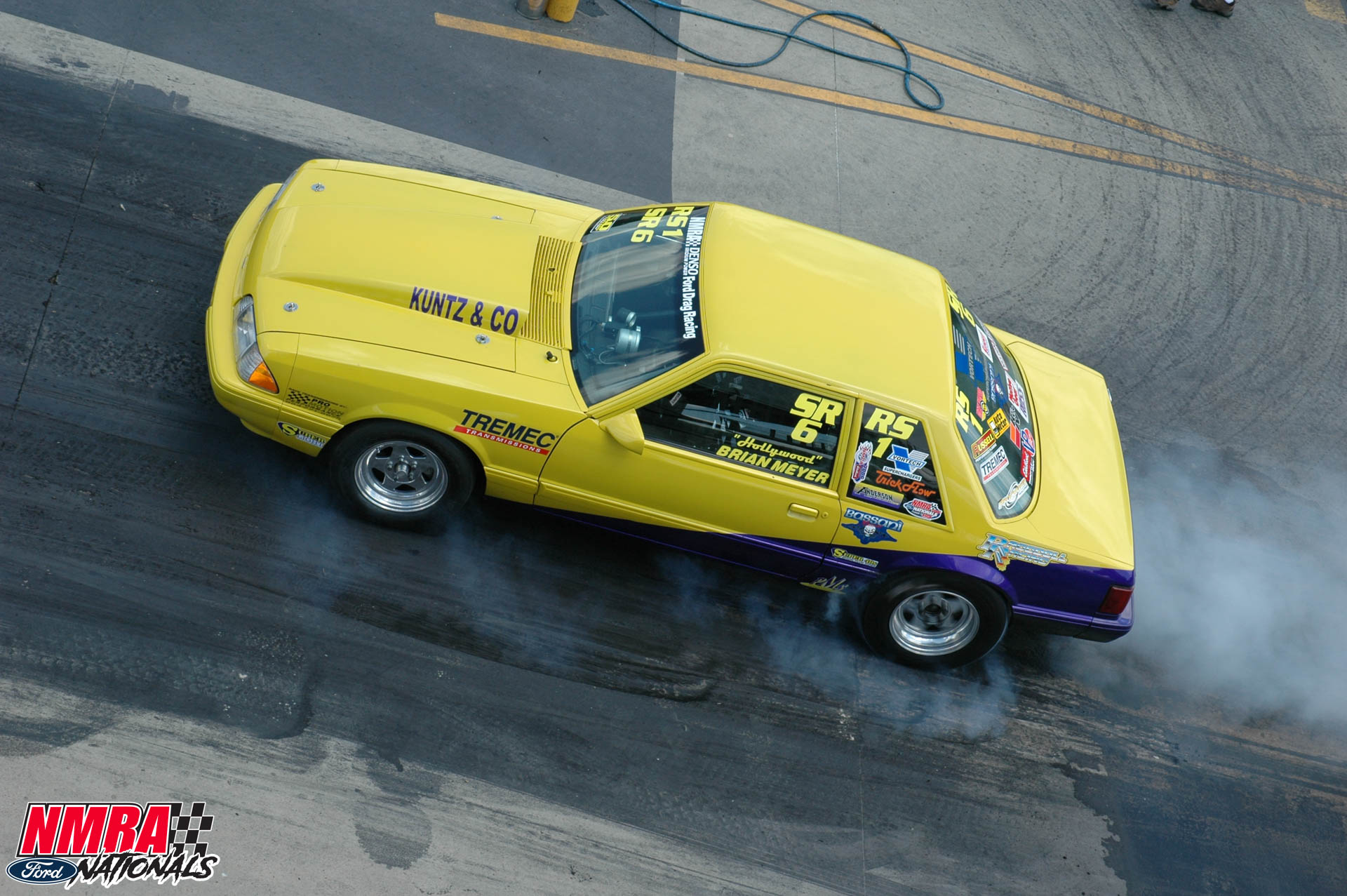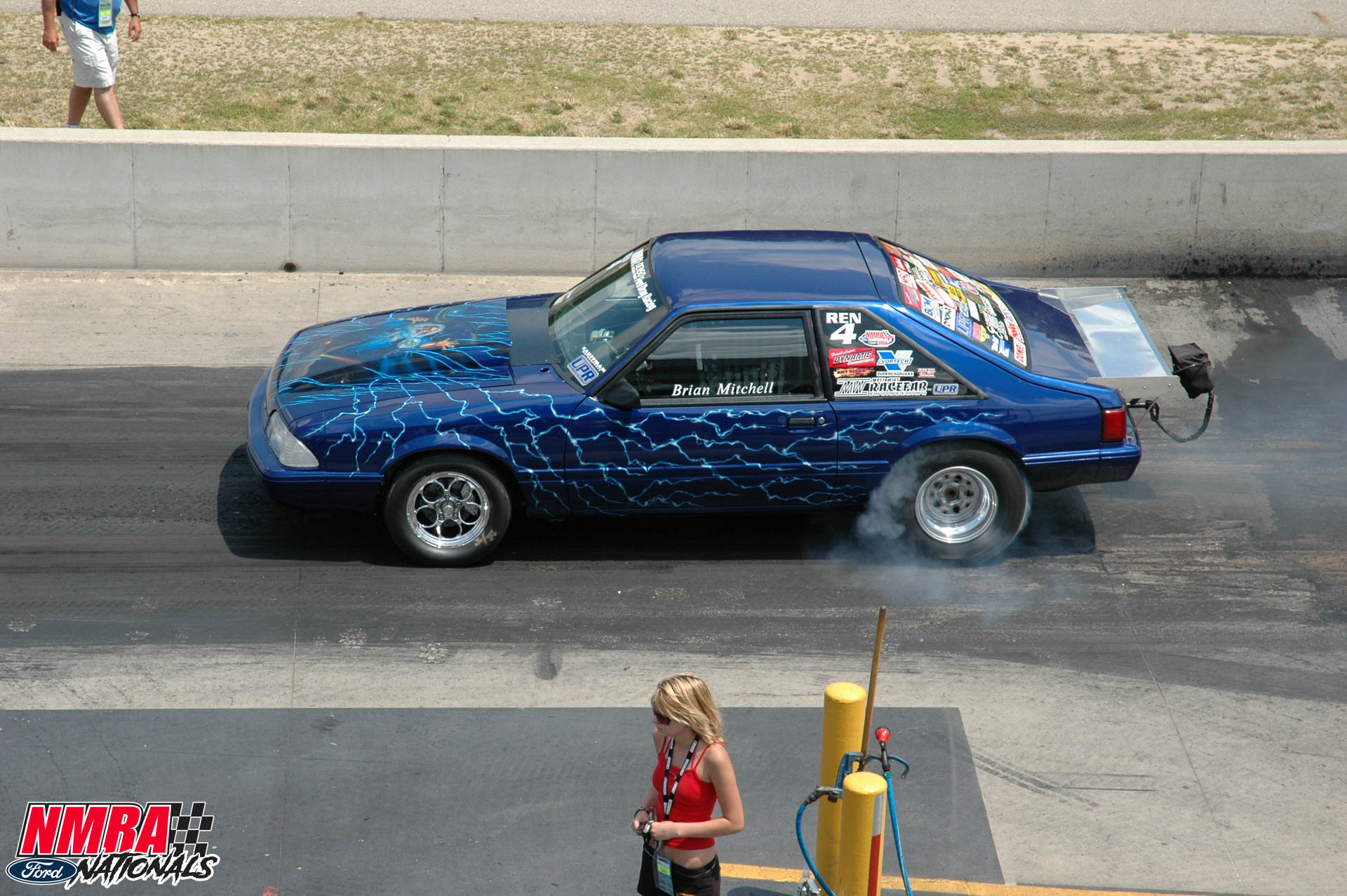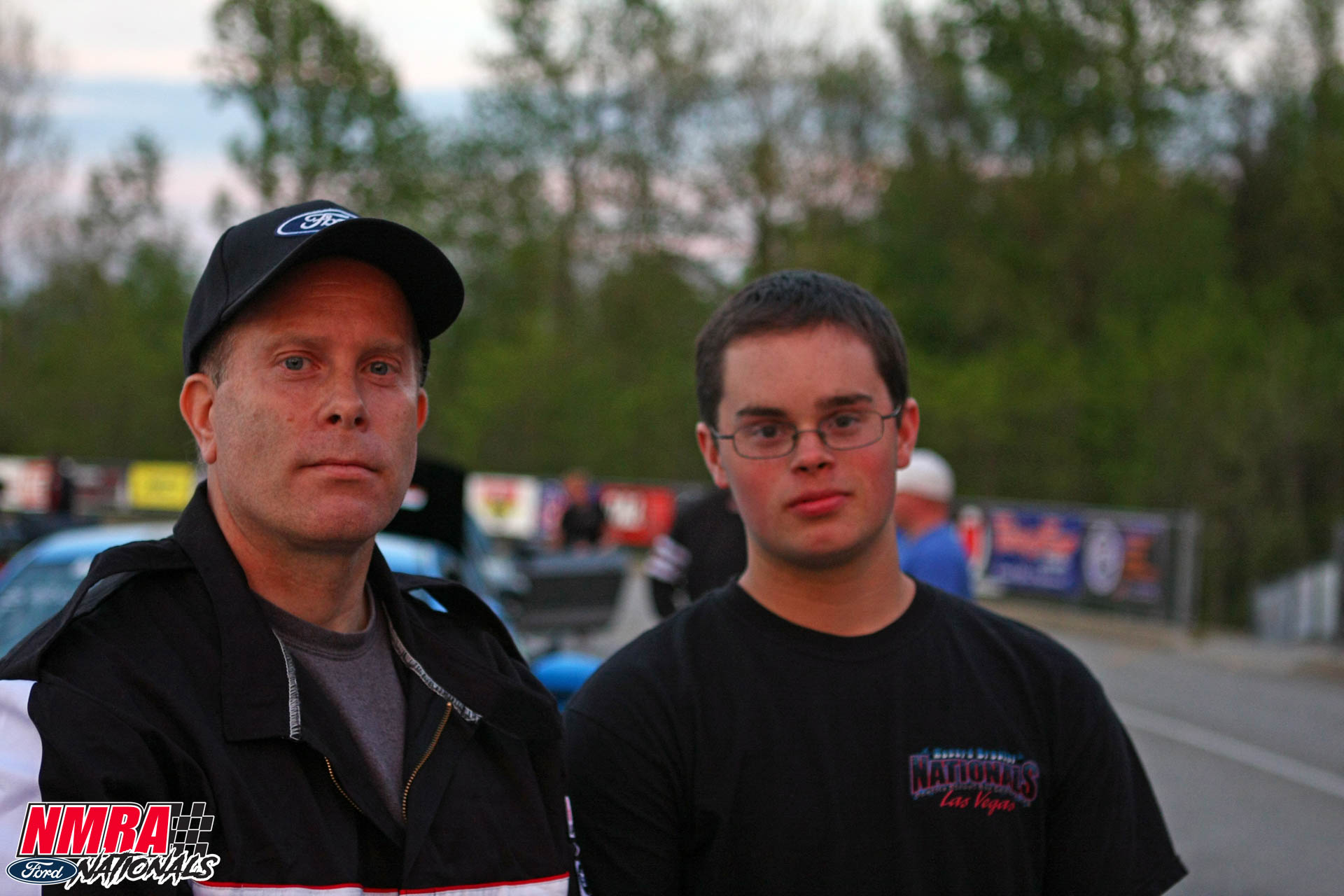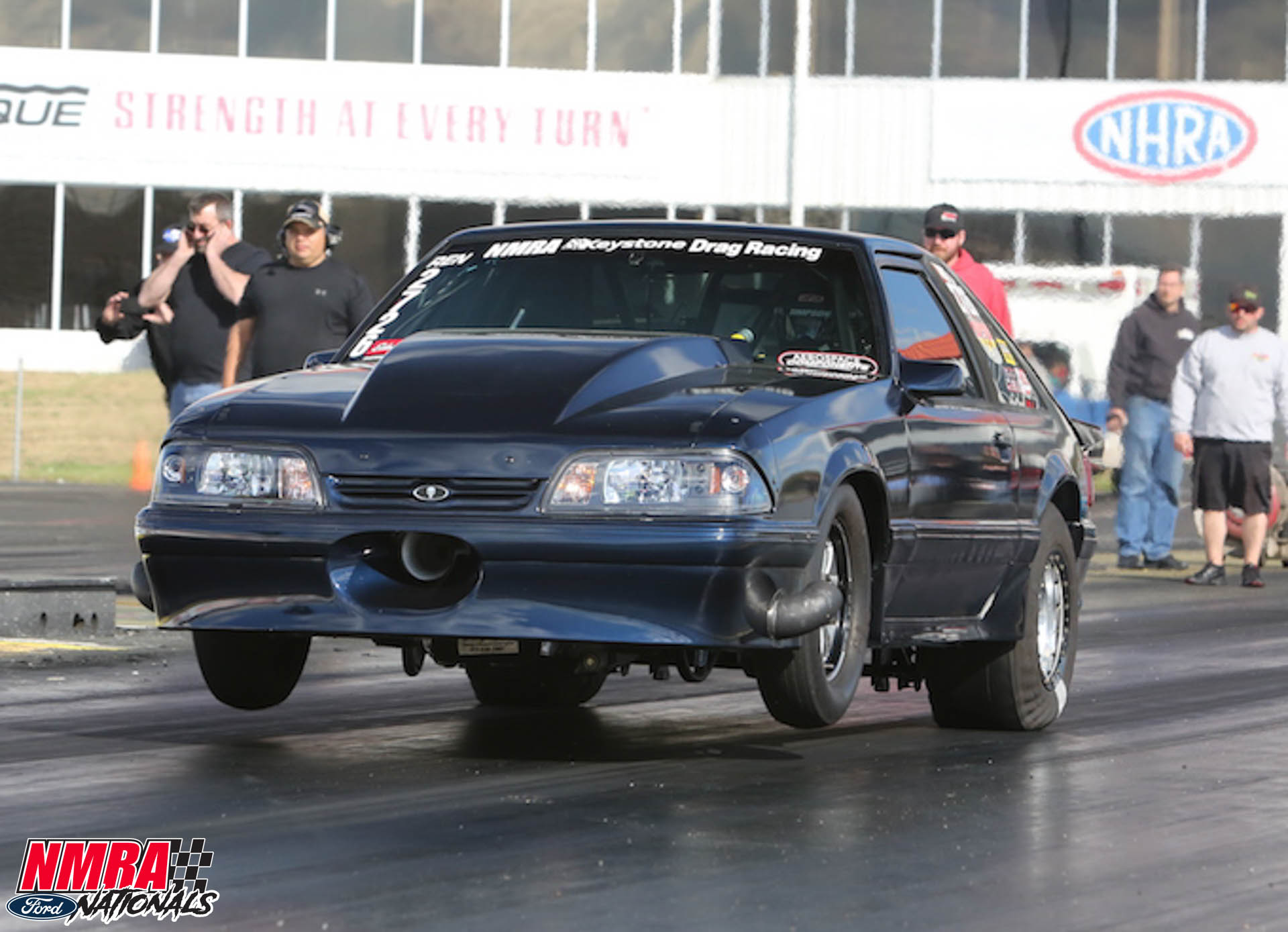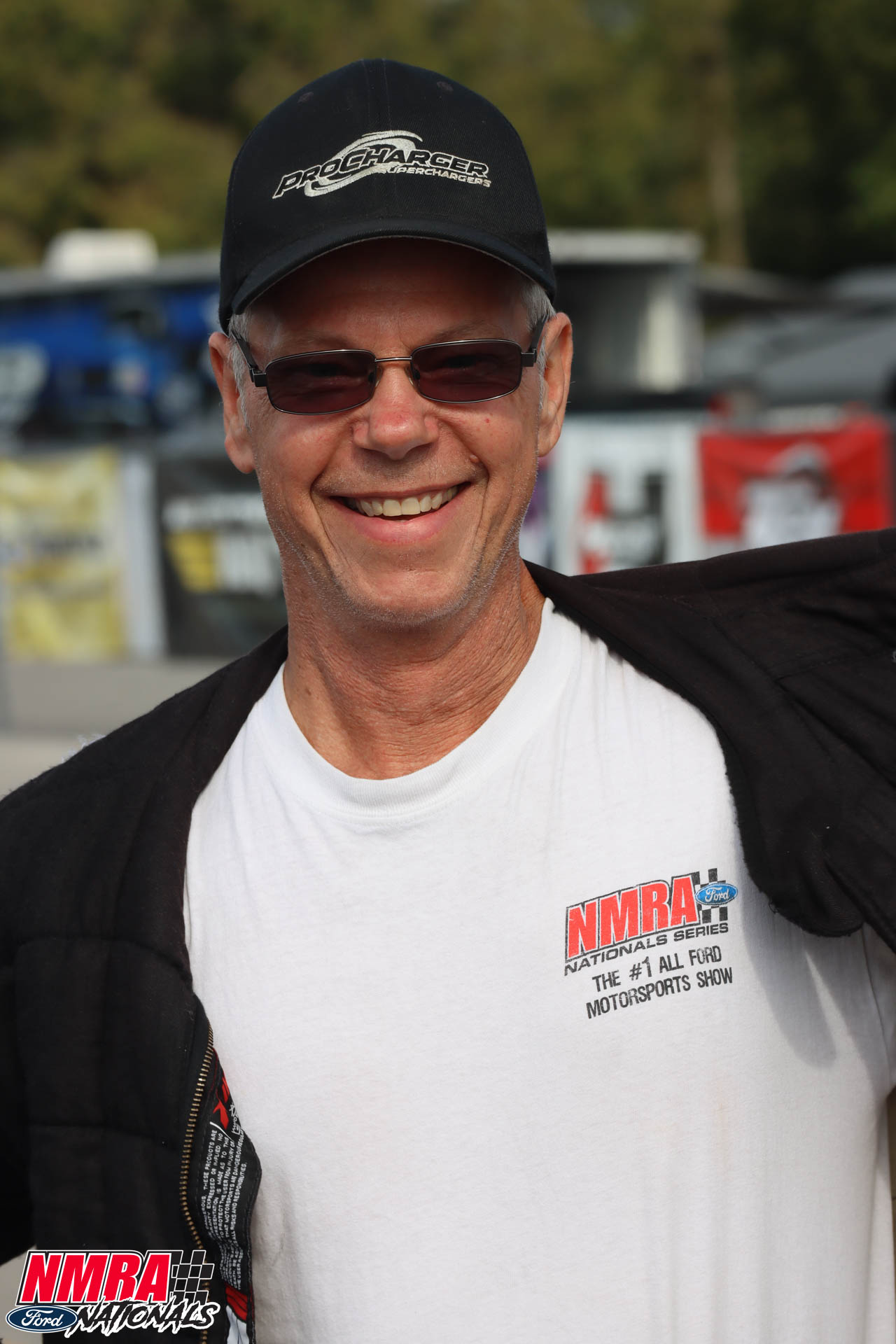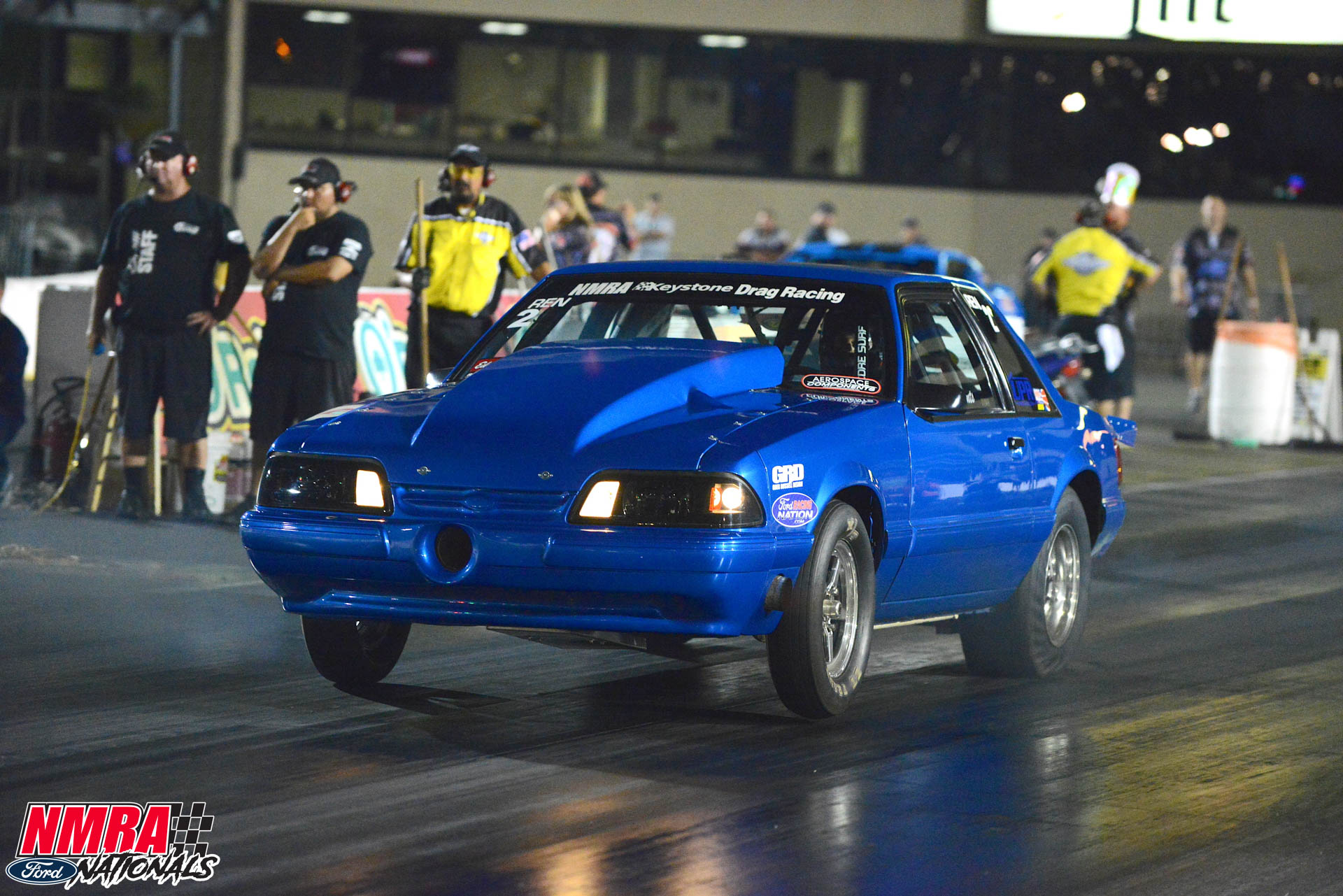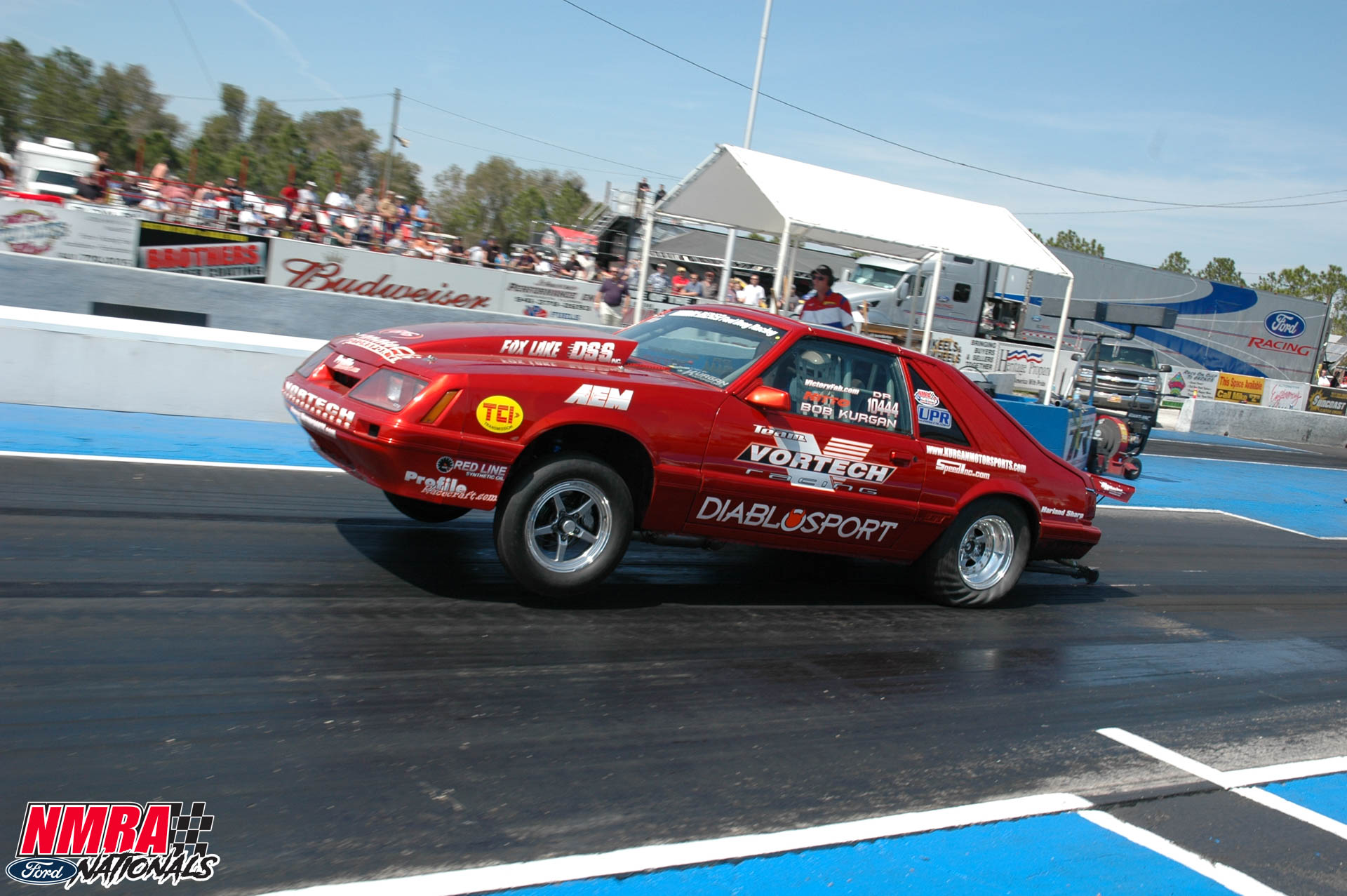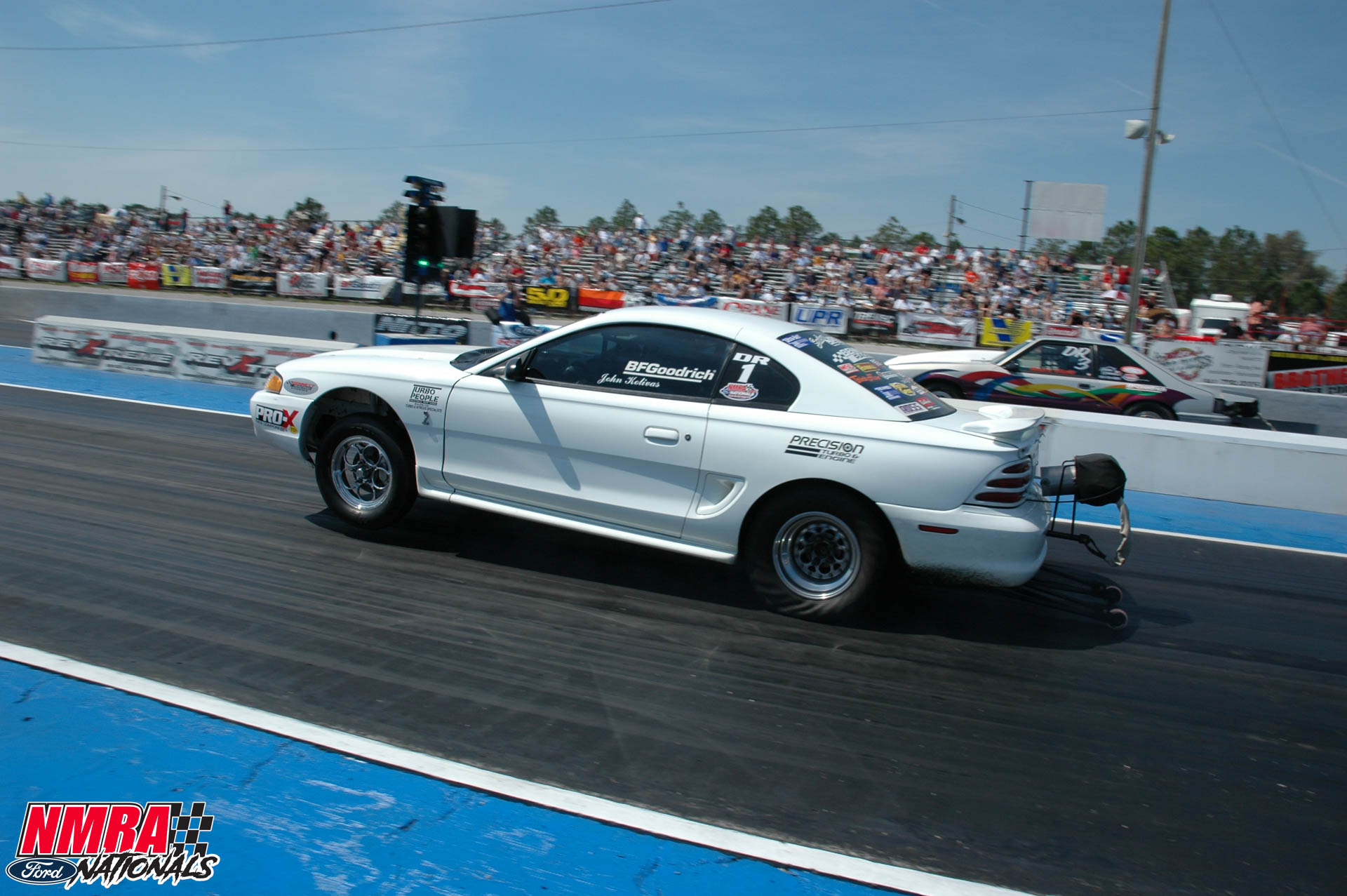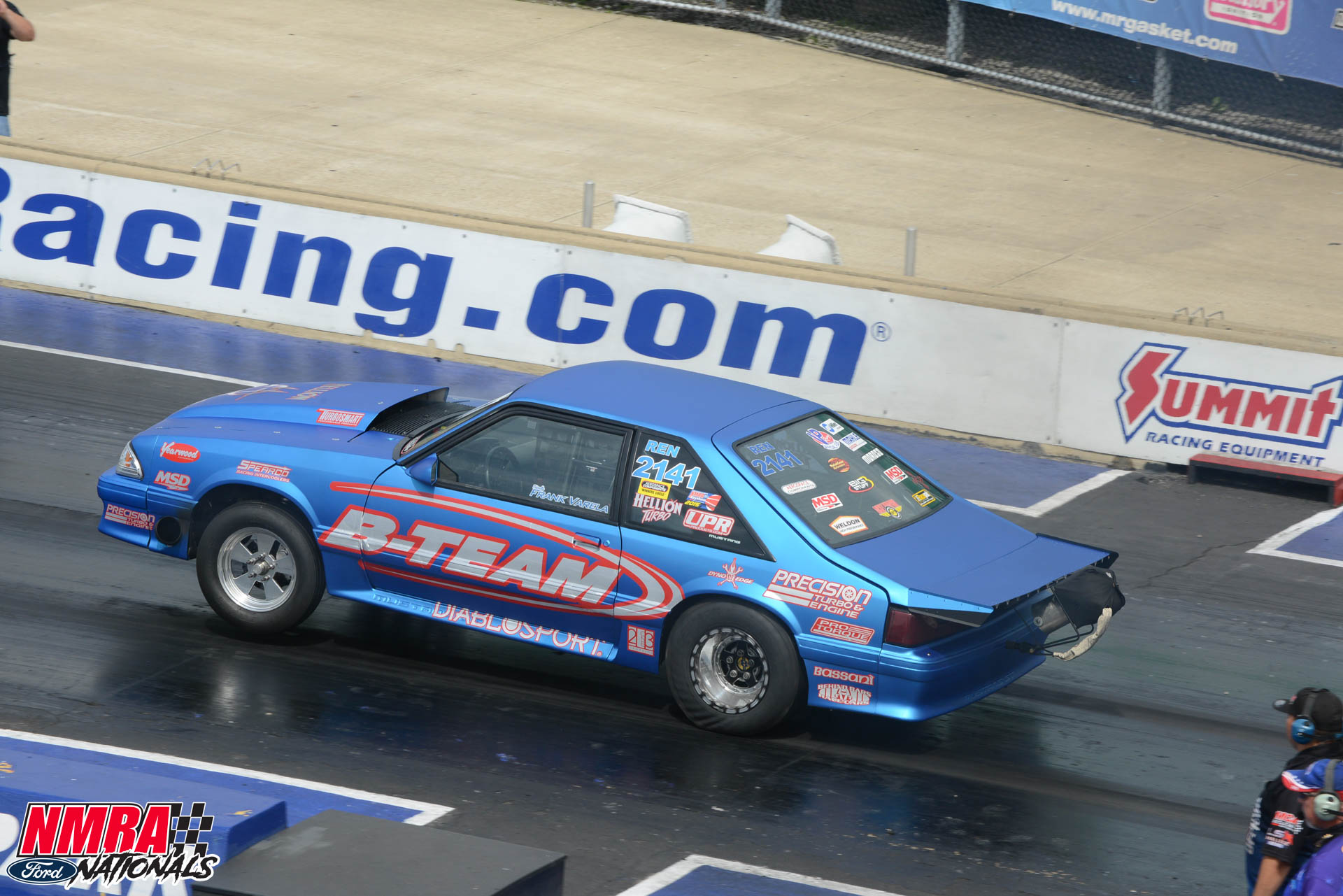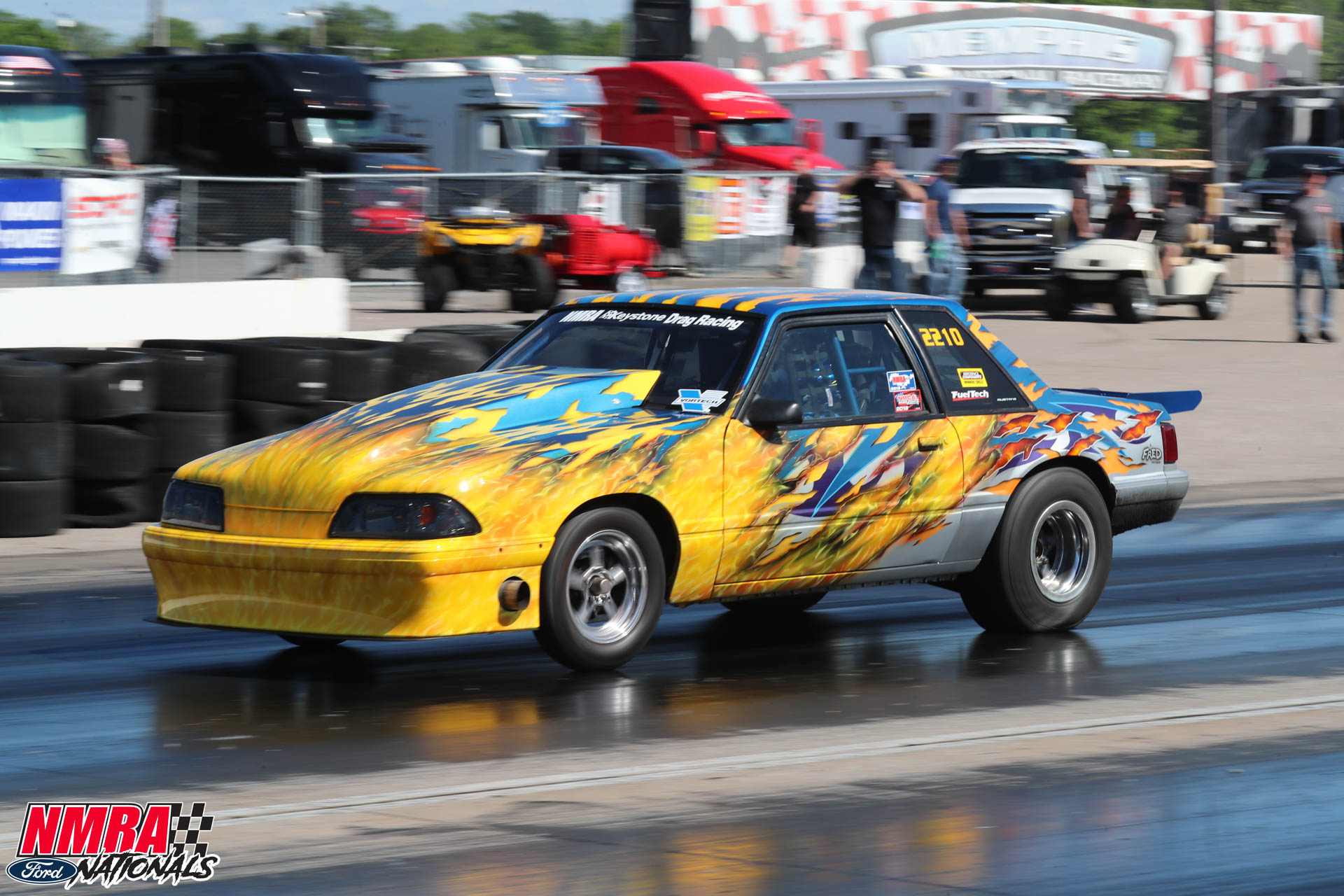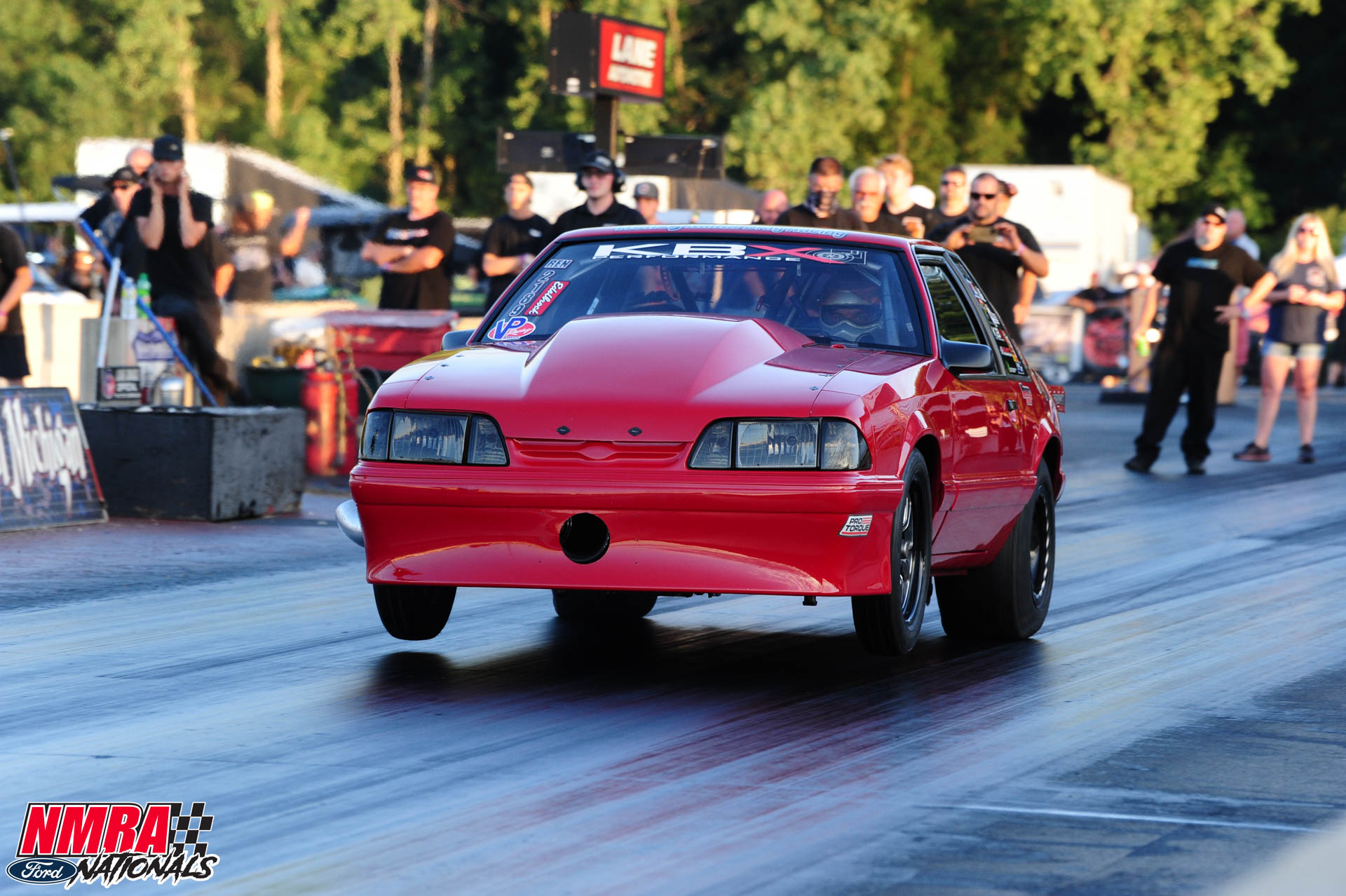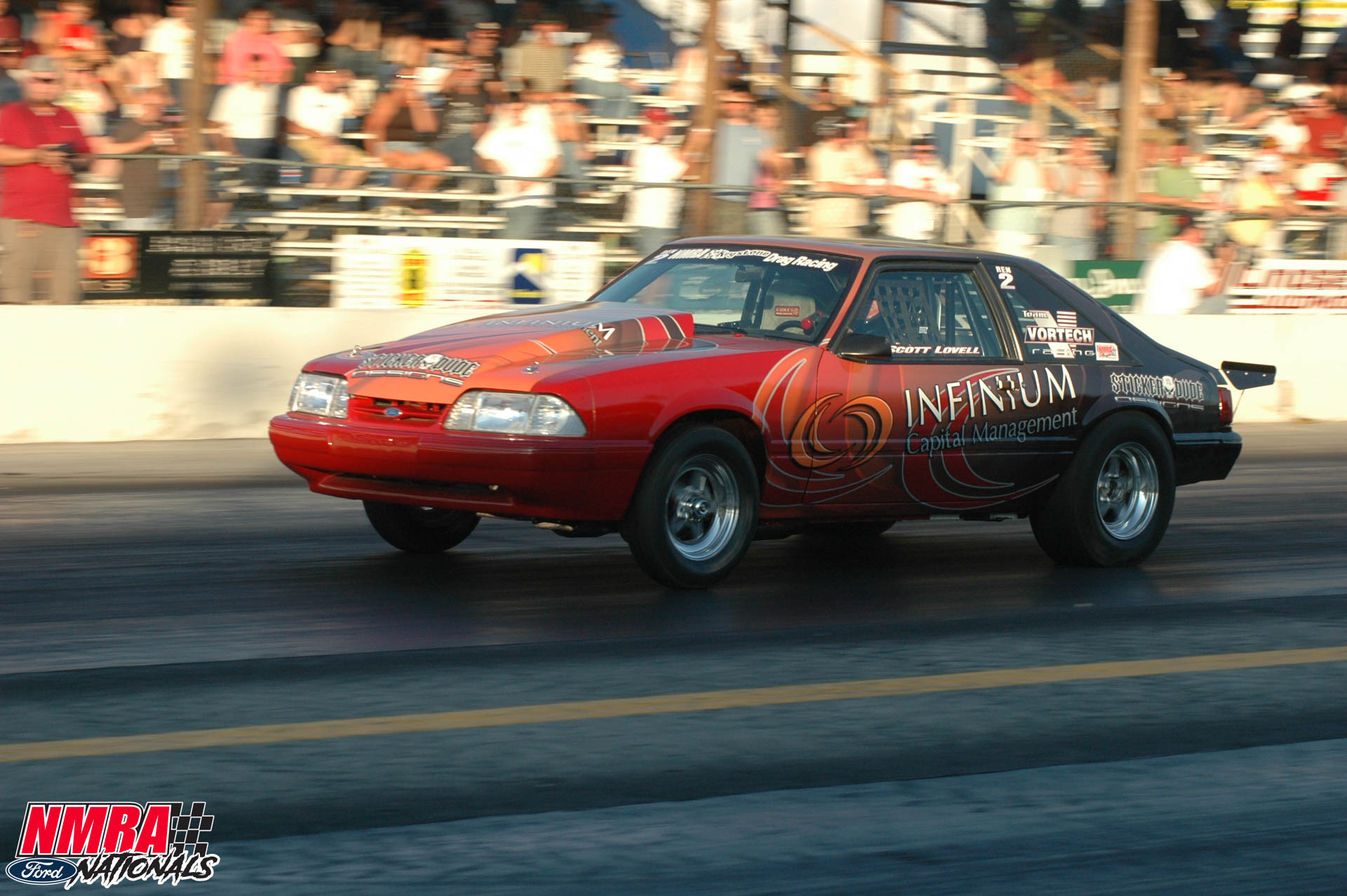Renegade Retrospective—Celebrating NMRA’s longest-running class in honor of the series’ silver anniversary
Written by Ainsley Jacobs
Photography from the FSC archives
Dating back to the inaugural season of NMRA’s history, the Renegade category remains the series’ longest continuously ran category still in contention today. From its first season in 1999 through its current configuration, Renegade evolved through many changes as it has evolved over the years, but one thing remains the same — the relentless passion its competitors have for the class.
In the beginning, NMRA Renegade provided a home for seriously quick street cars. Its rules were written specifically to facilitate ease of entry and considerate of budgets for the eager racer who wanted to have some fun in a competitive environment on a quarter-mile racing surface. Combinations were limited to factory computers, 310 cubic inches of displacement, and hydraulic-roller cams, long-runner intakes were the norm, only small superchargers were permitted, and five-speed manual transmissions were mandated from the beginning.
Right from the start, the vibe of the Renegade class was that of a true racing family. Although the competition was undoubtedly cutthroat, the early days saw amicable collaboration between participants and the atmosphere in the pits fostered strong friendships.
Brian Mitchell, one of Renegade’s original members and a six-time class champion, got hooked on the class with its very first event. “I showed up to the Ford Motorsport Nationals at Maple Grove [Pennsylvania] which just so happened to be NMRA’s inaugural race, and I fit the class,” recalled Mitchell of the fateful day in 1999. “I drove my ’87 Mustang convertible to the track, put slicks on, raced all weekend, changed the tires, and drove home.”
Immediately after the race weekend wrapped up, Mitchell realized that his convertible wasn’t optimal for Renegade and he bought what was to become his Wizard 1 car — one of the most notorious in all of Renegade’s history and which he still campaigns 25 years later. “It was a big commitment to buy a new car after only one race, but the class was fun and I wanted to do more with it,” laughed the man of how he wound up purchasing his hard top 1992 Ford Mustang LX. “I had that car ready in time for the very next race.”
Having been around since the beginning of the NMRA — and prior to it, with Fun Ford Weekend and World Ford Challenge events — Bart Tobener initially ran his 5.0-liter Windsor-powered 1996 Mustang Cobra in Renegade. Complete with a Vortech supercharger, a stick-shift transmission, and a 10-point roll cage, he drove the car to UPR Products, where he worked at the time, every day. “I didn’t have to change anything, I could just go racing,” he noted of his first foray into Renegade. “We would have 30-40 cars show up for every race because it was more focused on street cars than it is now.”
Like Mitchell, Tobener quickly scrapped his initial platform and pivoted mid-season to be a bit more competitive. “I decided to build a real race car and bought a body in white in 1999. I took everything out of the ’96 Cobra and put it in the ’99 and had a ton of success,” Tobener shared of the mid-season car change which helped him rack up win after win.
The cars that were entered into Renegade in its formative years weren’t all that different from something that would typically be seen on a Friday or Saturday night at a local car cruise. While it may not have been full of revved-up daily drivers, Renegade gave racers a place to run their modified-yet-streetable machines; it was a class that was attainable for the average enthusiast.
Contested at a quarter-mile distance, Renegade saw Brian Meyer set both ends of the class records in 2000 with a 9.479-second blast and 145.72 mph trap speed. By 2002, though, legendary Ford performance guru and longtime NMRA racer, Jim LaRocca was knocking on the door of the category’s first 8-second hit.
LaRocca scored the Renegade season championship that same year — and he had a blast doing it. “It was so much fun back then. Everyone talked to each other and went to dinner together and had beers together. It was competitive, but the atmosphere was like a big family,” recalled LaRocca, who built a 1995 Ford Mustang Cobra with his friend, Mike Freeman, for Renegade.
LaRocca relied on a ProCharged, 302-cube powerplant and five-speed manual transmission. “It weighed around 3,500 pounds, had stock lifters, and a hydraulic cam,” he shared of the specs that helped him reset both the elapsed time and speed records for the season with a 9.050-second quarter-mile pass and a trap speed of 153.10 mph. “The only race I lost with it was due to mechanical failure when I broke the transmission.”
The following season, Dan Jaynes blasted down the 1,320 with a blistering 8.88-seocnd run and raised the bar on the Renegade elapsed-time record once again. It wasn’t long before others started chipping away at the numbers, too, progressively clocking quicker and faster passes as the category developed.
Full, 16+ car fields were the norm in Renegade as the class was wildly popular with racers who enjoyed running all-out without devastating their bank accounts. Guys like Mitchell, Tobener, LaRocca, Bob Kurgan, Mike Post, Kurt Gallant, Scott Lovell, and many more went all-in on driving the class forward.
“You couldn’t buy a ton of parts off the shelf, so you actually had to figure it out and make stuff,” LaRocca stated of the immense innovation that went on during the time and made it more challenging to race, but also more rewarding. “Today, it’s about who’s got the most money, best cars, or rules advantage. Now, the cars make so much power that you can be off with the tune-up and still go fast. Back then, you had to work harder at it.”
Both Mitchell and Tobener also agreed that the hard work was well worth it for the progress that was achieved. The rules hadn’t changed much over the first decade or so of Renegade’s life, but that’s what made the class so popular — racers could build a car, show up, and run it for a while without having to spend more to accommodate adjustments.
“After the first three years or so, automatic transmissions were permitted,” explained Mitchell, who noted that aftermarket computers were also instated around 2006-2007. “There weren’t any changes made to the engine, though. And that’s why the class stayed a mid-nines-to-mid-eights category for over 10 years.”
Since the powerplants were locked down for modifications, competitors had to find other ways to coax quicker runs from their Fords. For Mitchell, he progressed his Wizard Mustang from street car to race car by upgrading his roll cage, adding lightweight brakes and better suspension components, fiddling with his torque converters, and making small gearing changes to optimize the performance of his engine.
“For me, the biggest change was when I debuted the Wizard 2 in 2007 and it was absolutely state-of-the-art, even when compared to cars of today,” recalled the most winningest racer in Renegade’s history. A funny car cage, titanium bolts, ceramic wheel bearings, true carbon fiber brake rotors, and so much more helped Mitchell go from running 8.60-second quarter-mile passes to 8.20-second runs without touching the drivetrain. “It was the same engine since 1999.”
Renegade racers were relentless in not leaving any elapsed time on the table and often worked together to pick up their programs. Amazingly, many even shared data – an extremely rare act amongst heads-up racers. Mitchell recalled one instance (among many others) when he hired a fellow racer and 2008 Renegade champion, Bob Cook, to machine a set of titanium front wheel studs. The men worked together, Cook produced several sets, and some of the other drivers purchased their own — the group effort of innovation helped all involved in the class.
By 2014, Renegade had progressed so rapidly that the first 7-second pass was officially in the record books. It was Tobener who did the deed, as he had been knocking on the door with an 8.020 at 172.72 mph pass while qualifying in Maryland. That same weekend, Tobener went 7.943 and followed it up with a 7.969-second pass later in the season in Ohio. It was an incredible season for the Georgia-based racer, as he qualified number one at five of the six Renegade races, and won four straight events in a row. Unsurprisingly, that was the year that Tobener secured a season championship of his own.
“Renegade didn’t progress as quickly as some other classes because its rules were stable and it was just fast enough to be fun,” said Mitchell, who had captured all six of his championships at that point. “Then, they rewrote the rulebook and I was told by an anonymous source that it was to remove my legacy.”
Mitchell started over on data acquisition as everything he had gathered on various tracks’ traction, weather conditions, and more over the last 15 years had all been rendered moot by the changes. “It was to the point where I could show up, go to the number-one spot in qualifying on the first session, and then not come back until it was time to race on Sunday because I already knew the tune-up I needed. How do you beat that? You can’t…” he confessed.
Although it would have been easy for Mitchell to feel targeted and be bitter about the shakeup, he graciously understood that it was for the greater good of the class and that Renegade’s rules needed to be rewritten to keep the class competitive for new cars and racers joining the fray.
The refresh worked and, by 2015, Renegade was solidly a 7-second class. Frank Varela took over the leader’s reign by winning three of six events along with a runner-up finish and multiple number-one qualifiers to clinch the championship. In 2016, the honors went to Aaron Bates while Alton Clements was the man to beat in 2017.
Varela locked in a second championship in 2018, and that season marked the last for Renegade as a quarter-mile class as elapsed times progressed into the low 7.3-second range with speeds of nearly 190 mph across the board.
In 2019, Renegade restarted as an eighth-mile category and ushered in a new era in the class’s history. The change was made to help reduce wear and tear on parts, promote financial effectiveness for competitors, and keep drivers safer by limiting the high-speed milestones their cars were eclipsing. Racers responded affirmatively, knowing things happen quite fast — literally — at upward of 200 mph, and collectively agreed with the decision.
As with so many other categories in drag racing, though, as Renegade changed over the years, so did the requirements for remaining competitive. Now, as NMRA’s flagship quickest and fastest class with top qualifiers regularly clicking off 4.5-second passes and running around 150 mph in the eighth-mile, Renegade requires more cubic dollars than ever before.
“I’ve been accused five or six times of ruining the class over the years — thanks, Bob Kurgan — but it’s still here,” laughed Tobener, who went through a fleet of many different vehicles during his decades of domination. “Originally, it was an affordable power-adder class where you could build a car for $20,000 but now if you spend $50K, you’ll be at the back of the field.”
Mitchell agreed, as he had built his original Wizard 1 Renegade entry for less than $10,000. “Now that it’s redone, there’s over $300,000 in it,” he admitted specifically to highlight the contrasting comparison of then versus now. “For someone to build a competitive car today, they’ll need a double-frame-rail chassis, multiple engines, all the body panels, carbon components… and it’ll run upward of $200K.”
Renegade is definitely still attainable for the handy, grassroots racer that can do a lot of the work his or herself, however, the proliferation of powerhouse teams such as KBX Performance that include brain trusts of genius-level tuners like John Kolivas and dedicated engine builders like Jon Bennett of Bennet Racing Engines, have amped up what it takes to win.
Showcasing his incredible driving abilities and with KBX backing him, John Kolivas earned three straight Renegade championships in 2020, 2021, and 2022. His accomplishments are certainly no less impressive despite having KBX on board, but the level of professionalism and diehard dedication is lightyears more advanced than where Renegade began. Joel Greathouse enjoys consistent success with their backing in the current era of Renegade.
“I never thought the class would be to where someone goes 4.40s at nearly every race now,” mused Tobener, who was making high-10-second passes in his early years. “If they don’t do something to slow it down, I know we’ll see 4.30s soon… that’s just what racers do — they want to go faster and do whatever it takes to get there.”
Currently, NMRA Renegade is restricted to American Ford-production vehicles and the rulebook permits both small-block and big-block Ford engines to be used along with a size-restricted single power adder so as to maintain parity. Whether it’s a supercharged, turbocharged, or nitrous-assisted combination, all are welcome to party in Renegade as long as the engine — either aftermarket cast iron or cast aluminum — retains its factory OEM bore spacing.
Despite having sold his Wizard 2 car, truck, and trailer completely several years prior, Mitchell missed Renegade so much that he came back with a revamped Wizard 1.5 in 2019. Now, working with his longtime racing partner and fellow NMRA powerhouse, Adam Arndt, Mitchell is making it his mission to return to NMRA in 2023. “The original feeling of the class being a family is still there, and many of us from the early days still regularly communicate and stay in touch,” affirmed the old-school racer.
As the only class that has run consistently since the beginning of the NMRA series, Renegade evolved significantly over the years from its initial street car days to its modern race-car era and the rulebook has expanded in complexity, but the essence remains the same: give Ford-focused racers a place to go fast on small tires with a laid-back vibe all while pushing the limits of street-style performance through passion and innovation.
Written by Ainsley Jacobs
Photography from the FSC archives
Dating back to the inaugural season of NMRA’s history, the Renegade category remains the series’ longest continuously ran category still in contention today. From its first season in 1999 through its current configuration, Renegade evolved through many changes as it has evolved over the years, but one thing remains the same — the relentless passion its competitors have for the class.
In the beginning, NMRA Renegade provided a home for seriously quick street cars. Its rules were written specifically to facilitate ease of entry and considerate of budgets for the eager racer who wanted to have some fun in a competitive environment on a quarter-mile racing surface. Combinations were limited to factory computers, 310 cubic inches of displacement, and hydraulic-roller cams, long-runner intakes were the norm, only small superchargers were permitted, and five-speed manual transmissions were mandated from the beginning.
Right from the start, the vibe of the Renegade class was that of a true racing family. Although the competition was undoubtedly cutthroat, the early days saw amicable collaboration between participants and the atmosphere in the pits fostered strong friendships.
Brian Mitchell, one of Renegade’s original members and a six-time class champion, got hooked on the class with its very first event. “I showed up to the Ford Motorsport Nationals at Maple Grove [Pennsylvania] which just so happened to be NMRA’s inaugural race, and I fit the class,” recalled Mitchell of the fateful day in 1999. “I drove my ’87 Mustang convertible to the track, put slicks on, raced all weekend, changed the tires, and drove home.”
Immediately after the race weekend wrapped up, Mitchell realized that his convertible wasn’t optimal for Renegade and he bought what was to become his Wizard 1 car — one of the most notorious in all of Renegade’s history and which he still campaigns 25 years later. “It was a big commitment to buy a new car after only one race, but the class was fun and I wanted to do more with it,” laughed the man of how he wound up purchasing his hard top 1992 Ford Mustang LX. “I had that car ready in time for the very next race.”
Having been around since the beginning of the NMRA — and prior to it, with Fun Ford Weekend and World Ford Challenge events — Bart Tobener initially ran his 5.0-liter Windsor-powered 1996 Mustang Cobra in Renegade. Complete with a Vortech supercharger, a stick-shift transmission, and a 10-point roll cage, he drove the car to UPR Products, where he worked at the time, every day. “I didn’t have to change anything, I could just go racing,” he noted of his first foray into Renegade. “We would have 30-40 cars show up for every race because it was more focused on street cars than it is now.”
Like Mitchell, Tobener quickly scrapped his initial platform and pivoted mid-season to be a bit more competitive. “I decided to build a real race car and bought a body in white in 1999. I took everything out of the ’96 Cobra and put it in the ’99 and had a ton of success,” Tobener shared of the mid-season car change which helped him rack up win after win.
The cars that were entered into Renegade in its formative years weren’t all that different from something that would typically be seen on a Friday or Saturday night at a local car cruise. While it may not have been full of revved-up daily drivers, Renegade gave racers a place to run their modified-yet-streetable machines; it was a class that was attainable for the average enthusiast.
Contested at a quarter-mile distance, Renegade saw Brian Meyer set both ends of the class records in 2000 with a 9.479-second blast and 145.72 mph trap speed. By 2002, though, legendary Ford performance guru and longtime NMRA racer, Jim LaRocca was knocking on the door of the category’s first 8-second hit.
LaRocca scored the Renegade season championship that same year — and he had a blast doing it. “It was so much fun back then. Everyone talked to each other and went to dinner together and had beers together. It was competitive, but the atmosphere was like a big family,” recalled LaRocca, who built a 1995 Ford Mustang Cobra with his friend, Mike Freeman, for Renegade.
LaRocca relied on a ProCharged, 302-cube powerplant and five-speed manual transmission. “It weighed around 3,500 pounds, had stock lifters, and a hydraulic cam,” he shared of the specs that helped him reset both the elapsed time and speed records for the season with a 9.050-second quarter-mile pass and a trap speed of 153.10 mph. “The only race I lost with it was due to mechanical failure when I broke the transmission.”
The following season, Dan Jaynes blasted down the 1,320 with a blistering 8.88-seocnd run and raised the bar on the Renegade elapsed-time record once again. It wasn’t long before others started chipping away at the numbers, too, progressively clocking quicker and faster passes as the category developed.
Full, 16+ car fields were the norm in Renegade as the class was wildly popular with racers who enjoyed running all-out without devastating their bank accounts. Guys like Mitchell, Tobener, LaRocca, Bob Kurgan, Mike Post, Kurt Gallant, Scott Lovell, and many more went all-in on driving the class forward.
“You couldn’t buy a ton of parts off the shelf, so you actually had to figure it out and make stuff,” LaRocca stated of the immense innovation that went on during the time and made it more challenging to race, but also more rewarding. “Today, it’s about who’s got the most money, best cars, or rules advantage. Now, the cars make so much power that you can be off with the tune-up and still go fast. Back then, you had to work harder at it.”
Both Mitchell and Tobener also agreed that the hard work was well worth it for the progress that was achieved. The rules hadn’t changed much over the first decade or so of Renegade’s life, but that’s what made the class so popular — racers could build a car, show up, and run it for a while without having to spend more to accommodate adjustments.
“After the first three years or so, automatic transmissions were permitted,” explained Mitchell, who noted that aftermarket computers were also instated around 2006-2007. “There weren’t any changes made to the engine, though. And that’s why the class stayed a mid-nines-to-mid-eights category for over 10 years.”
Since the powerplants were locked down for modifications, competitors had to find other ways to coax quicker runs from their Fords. For Mitchell, he progressed his Wizard Mustang from street car to race car by upgrading his roll cage, adding lightweight brakes and better suspension components, fiddling with his torque converters, and making small gearing changes to optimize the performance of his engine.
“For me, the biggest change was when I debuted the Wizard 2 in 2007 and it was absolutely state-of-the-art, even when compared to cars of today,” recalled the most winningest racer in Renegade’s history. A funny car cage, titanium bolts, ceramic wheel bearings, true carbon fiber brake rotors, and so much more helped Mitchell go from running 8.60-second quarter-mile passes to 8.20-second runs without touching the drivetrain. “It was the same engine since 1999.”
Renegade racers were relentless in not leaving any elapsed time on the table and often worked together to pick up their programs. Amazingly, many even shared data – an extremely rare act amongst heads-up racers. Mitchell recalled one instance (among many others) when he hired a fellow racer and 2008 Renegade champion, Bob Cook, to machine a set of titanium front wheel studs. The men worked together, Cook produced several sets, and some of the other drivers purchased their own — the group effort of innovation helped all involved in the class.
By 2014, Renegade had progressed so rapidly that the first 7-second pass was officially in the record books. It was Tobener who did the deed, as he had been knocking on the door with an 8.020 at 172.72 mph pass while qualifying in Maryland. That same weekend, Tobener went 7.943 and followed it up with a 7.969-second pass later in the season in Ohio. It was an incredible season for the Georgia-based racer, as he qualified number one at five of the six Renegade races, and won four straight events in a row. Unsurprisingly, that was the year that Tobener secured a season championship of his own.
“Renegade didn’t progress as quickly as some other classes because its rules were stable and it was just fast enough to be fun,” said Mitchell, who had captured all six of his championships at that point. “Then, they rewrote the rulebook and I was told by an anonymous source that it was to remove my legacy.”
Mitchell started over on data acquisition as everything he had gathered on various tracks’ traction, weather conditions, and more over the last 15 years had all been rendered moot by the changes. “It was to the point where I could show up, go to the number-one spot in qualifying on the first session, and then not come back until it was time to race on Sunday because I already knew the tune-up I needed. How do you beat that? You can’t…” he confessed.
Although it would have been easy for Mitchell to feel targeted and be bitter about the shakeup, he graciously understood that it was for the greater good of the class and that Renegade’s rules needed to be rewritten to keep the class competitive for new cars and racers joining the fray.
The refresh worked and, by 2015, Renegade was solidly a 7-second class. Frank Varela took over the leader’s reign by winning three of six events along with a runner-up finish and multiple number-one qualifiers to clinch the championship. In 2016, the honors went to Aaron Bates while Alton Clements was the man to beat in 2017.
Varela locked in a second championship in 2018, and that season marked the last for Renegade as a quarter-mile class as elapsed times progressed into the low 7.3-second range with speeds of nearly 190 mph across the board.
In 2019, Renegade restarted as an eighth-mile category and ushered in a new era in the class’s history. The change was made to help reduce wear and tear on parts, promote financial effectiveness for competitors, and keep drivers safer by limiting the high-speed milestones their cars were eclipsing. Racers responded affirmatively, knowing things happen quite fast — literally — at upward of 200 mph, and collectively agreed with the decision.
As with so many other categories in drag racing, though, as Renegade changed over the years, so did the requirements for remaining competitive. Now, as NMRA’s flagship quickest and fastest class with top qualifiers regularly clicking off 4.5-second passes and running around 150 mph in the eighth-mile, Renegade requires more cubic dollars than ever before.
“I’ve been accused five or six times of ruining the class over the years — thanks, Bob Kurgan — but it’s still here,” laughed Tobener, who went through a fleet of many different vehicles during his decades of domination. “Originally, it was an affordable power-adder class where you could build a car for $20,000 but now if you spend $50K, you’ll be at the back of the field.”
Mitchell agreed, as he had built his original Wizard 1 Renegade entry for less than $10,000. “Now that it’s redone, there’s over $300,000 in it,” he admitted specifically to highlight the contrasting comparison of then versus now. “For someone to build a competitive car today, they’ll need a double-frame-rail chassis, multiple engines, all the body panels, carbon components… and it’ll run upward of $200K.”
Renegade is definitely still attainable for the handy, grassroots racer that can do a lot of the work his or herself, however, the proliferation of powerhouse teams such as KBX Performance that include brain trusts of genius-level tuners like John Kolivas and dedicated engine builders like Jon Bennett of Bennet Racing Engines, have amped up what it takes to win.
Showcasing his incredible driving abilities and with KBX backing him, John Kolivas earned three straight Renegade championships in 2020, 2021, and 2022. His accomplishments are certainly no less impressive despite having KBX on board, but the level of professionalism and diehard dedication is lightyears more advanced than where Renegade began. Joel Greathouse enjoys consistent success with their backing in the current era of Renegade.
“I never thought the class would be to where someone goes 4.40s at nearly every race now,” mused Tobener, who was making high-10-second passes in his early years. “If they don’t do something to slow it down, I know we’ll see 4.30s soon… that’s just what racers do — they want to go faster and do whatever it takes to get there.”
Currently, NMRA Renegade is restricted to American Ford-production vehicles and the rulebook permits both small-block and big-block Ford engines to be used along with a size-restricted single power adder so as to maintain parity. Whether it’s a supercharged, turbocharged, or nitrous-assisted combination, all are welcome to party in Renegade as long as the engine — either aftermarket cast iron or cast aluminum — retains its factory OEM bore spacing.
Despite having sold his Wizard 2 car, truck, and trailer completely several years prior, Mitchell missed Renegade so much that he came back with a revamped Wizard 1.5 in 2019. Now, working with his longtime racing partner and fellow NMRA powerhouse, Adam Arndt, Mitchell is making it his mission to return to NMRA in 2023. “The original feeling of the class being a family is still there, and many of us from the early days still regularly communicate and stay in touch,” affirmed the old-school racer.
As the only class that has run consistently since the beginning of the NMRA series, Renegade evolved significantly over the years from its initial street car days to its modern race-car era and the rulebook has expanded in complexity, but the essence remains the same: give Ford-focused racers a place to go fast on small tires with a laid-back vibe all while pushing the limits of street-style performance through passion and innovation.



